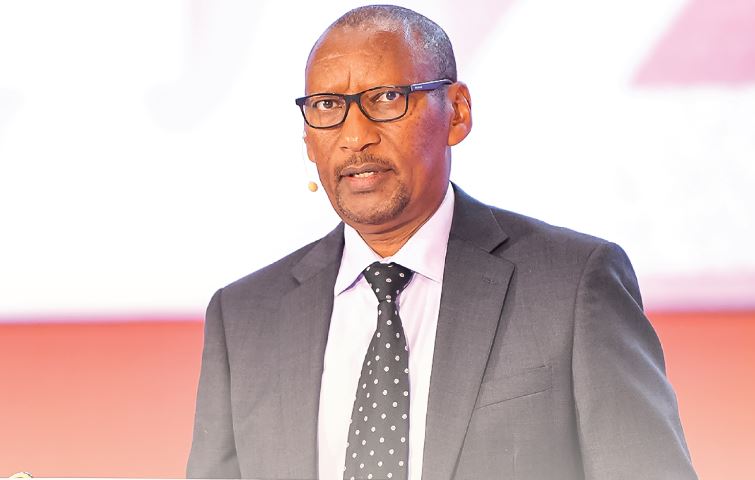John Rwangombwa, the Rwanda Central Bank Governor said Rwanda’s economy maintained its growth momentum in 2023, despite acing external and internal negative shocks.
“The Real GDP grew higher than the initially projected. This strong growth momentum is expected to continue in 2024 led by increasing investments in the construction and tourism sub-sectors and the recovery of the agriculture sector thanks to improving weather condition,” he said.
Rwangombwa made the remarks while presenting the 𝐌𝐨𝐧𝐞𝐭𝐚𝐫𝐲 𝐏𝐨𝐥𝐢𝐜𝐲 & 𝐅𝐢𝐧𝐚𝐧𝐜𝐢𝐚𝐥 𝐒𝐭𝐚𝐛𝐢𝐥𝐢𝐭𝐲 𝐒𝐭𝐚𝐭𝐞𝐦𝐞𝐧𝐭 in the capital Kigali.
Rwangombwa also announced on Thursday that Sub-Saharan Africa (SSA) projected inflation this year is 13.1% down from 15.8% in 2023 and 14.5% in 2022.
In comparison, he said global inflation is projected to ease to 5.8% in 2024 from 6.8% in 2023 and 8.7% in 2022.
Meanwhile, global economic growth is projected to stabilize at 3.1% in 2024, a slight reduction from 3.5% recorded in 2022. SSA economic growth is projected at 3.8% in 2024 from 3.3% in 2023 and 4.0% in 2022.
Rwanda Situation
Rwangombwa noted that Rwanda’s financial sector continued to grow in number and size. Growth in size was mainly driven by increased deposits and retained earnings, and this growth is reflected across all sectors.
The increase in the number of financial institutions, on the other hand, was driven by the entrance of new Non-Deposit Taking Financial Institutions (NDTFIs), following the review of the law governing non-deposit-taking financial service providers in April 2023.
The increase in financial sector assets relative to Gross Domestic Product (GDP) indicates a deepening role of the financial sector in the economy. Similarly, Credit to GDP ratio also increased driven by the increased demand for loans.
Rwanda’s international trade continued its recovery in 2023. Merchandise exports rose by 1.7% in 2023, supported by the good performance of domestic manufacturing exports.
On the other hand, merchandise imports also rose by 6.9%, mainly driven by the increased demand for imported goods and services to support the continued economic recovery. As a result, the trade deficit widened by 10.2%.



















